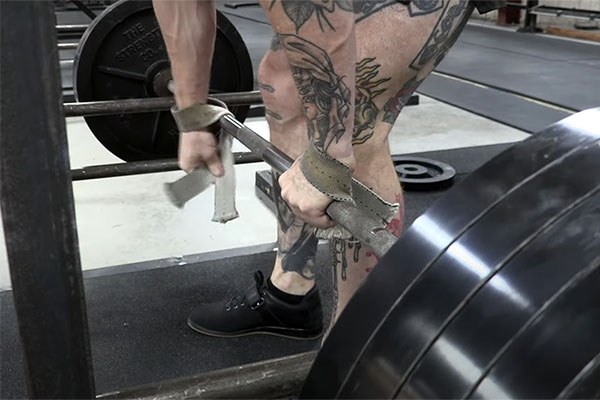
Haltings and Rack Pulls
by Carl Raghavan, SSC | April 01, 2025
I wasn’t always a believer.
In fact, I
was one of those SSCs who dismissed the halting deadlift, and I
didn’t think much of the rack pull either. I may have run the
standard progression, alternating haltings on Week 1 and rack pulls
on Week 2 several times. But truth be told, I never pushed the
numbers high enough to see what they could actually do. I didn’t
feel like I was getting anything out of them. No carryover. No real
bang for my buck.
So I wrote
them off.
But here’s
the kicker: the lifts weren’t broken – I was. It wasn’t time to
split up my deadlift or start an intermediate split. I made the
classic rookie mistake of jumping into haltings and rack pulls too
early, chasing intermediate programming before I’d actually earned
it. I hadn’t run my novice linear progression into the ground yet,
and the part that always tripped me up was weight gain. At 175
pounds, I didn’t need a new program – I needed to eat. I
should’ve gained weight yesterday.
Fast-forward
to now: I’m 275 pounds, and things look very different. These days,
my haltings are creeping toward 600 lb. My rack pulls are over 700.
And my deadlift sits at 640. That’s when I finally started to feel
it. The stress was appropriate. The progress was real. These two
lifts, done correctly, were feeding my deadlift in a way they never
had before.
Here’s
what I’ve come to realize: haltings and rack pulls work when
they’re heavy enough. That seems obvious, but it’s easy to
underestimate how much load is required to actually get a training
effect out of these movements. And that goes double for eating enough
too. When my haltings were stuck in the low 400s and my rack pulls
hovered around 500, they weren’t doing much for a 500-lb deadlift.
They were glorified warm-ups.
But when
those numbers climbed – when the haltings got so heavy it made my
eyes water, and the rack pulls made me question the meaning of life –
I noticed the difference. It wasn’t immediate, but the long-term
trend was undeniable.
From a
coaching perspective, this has changed how I use these lifts with
clients too. Nine times out of ten, their issue is right off the
floor. So we use haltings as a light-to-medium stress lift to
practice that very position: tight off the floor, mid-shin to just
above the knee, staying over the bar, building that tension. It’s
what I now call a Marmite lift – you either love it or you hate it.
But the funny part? Even the most stubborn lifters eventually come
around. Somewhere around Week 6 or 8, they start saying, “Oh yeah…I kinda get it now.”
And then
there’s the rack pull. And a word to novice lifters: don’t try
this in your gym just yet.
Nothing
quite humbles you like having gravity rip your soul back to earth.
You load the bar with 50 lb more than your best deadlift 1RM, stand
there thinking you’re strong, and then fight for five ugly reps.
That changes something in your head. It adjusts your perception of
effort. And suddenly, heavy doesn’t feel so heavy anymore.
The magic
of this combo – haltings and rack pulls – is how they train the
full spectrum of the deadlift without the systemic fatigue of pulling
heavy from the floor every week. You get exposure to both halves of
the movement, reinforce the correct positions, and push the stress
high enough to drive progress, without nuking your recovery. Plus,
you’re doing your power cleans too, right?
And if it’s
not working for you? There’s a decent chance it’s not the lift’s
fault. It might be user error. More often than not, the bar just
isn’t heavy enough to make them useful.
So don’t
write off haltings and rack pulls too soon. Earn them. Run the
numbers up. Run your bodyweight up. Give them a real shot, when the
time is right. Do that, and your deadlift won’t just grow – it’ll
take off.
Credit : Source Post







